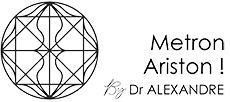Is Breast Augmentation Right for You? Benefits vs Risks
Understanding Breast Augmentation Surgery
Breast augmentation is a popular cosmetic procedure designed to enhance the size and shape of a woman’s breasts. It involves the surgical insertion of implants to achieve the desired look. This procedure is often sought by individuals looking to improve their body image and boost self-confidence.
Types of Breast Implants
There are primarily two types of breast implants: saline and silicone. Saline implants are filled with sterile salt water, while silicone implants are filled with a silicone gel. Each type has its own advantages and considerations, which should be discussed with a qualified surgeon.
- Saline Implants : Adjustable size, less expensive, but may feel less natural.
- Silicone Implants : More natural feel, but require a larger incision and regular monitoring.
Surgical Techniques
The surgical techniques for breast augmentation vary based on the type of implant and the desired outcome. Common techniques include inframammary, periareolar, and transaxillary incisions. Each technique has its own benefits and potential drawbacks.
- Inframammary Incision : Offers better control and placement, but leaves a visible scar.
- Periareolar Incision : Less visible scar, but may affect nipple sensation.
- Transaxillary Incision : No breast scarring, but more complex procedure.
Benefits of Breast Augmentation
Breast augmentation offers numerous benefits that can significantly impact a person’s life. These benefits often extend beyond physical appearance, affecting emotional and psychological well-being.
Improved Body Image and Self-Esteem
One of the most significant benefits of breast augmentation is the improvement in body image and self-esteem. Many individuals report feeling more confident and satisfied with their appearance after the procedure.
- Boosts Confidence : Enhances overall self-image and personal satisfaction.
- Positive Self-Perception : Encourages a healthier relationship with one’s body.
Enhanced Breast Symmetry
Breast augmentation can correct asymmetry, providing a more balanced and harmonious appearance. This is particularly beneficial for individuals with naturally uneven breasts.
- Balanced Appearance : Creates a more symmetrical look.
- Customizable Options : Allows for tailored solutions to individual needs.
Restoration of Breast Volume After Pregnancy or Weight Loss
Pregnancy and significant weight loss can lead to a loss of breast volume. Breast augmentation can restore this volume, helping individuals regain their pre-pregnancy or pre-weight loss figure.
- Restores Fullness : Rejuvenates the breasts to their former shape.
- Improves Contour : Enhances the overall silhouette of the body.
Risks and Potential Complications
While breast augmentation offers many benefits, it is essential to be aware of the potential risks and complications associated with the procedure.
Implant Rupture or Leakage
Implant rupture or leakage is a risk associated with breast augmentation. This can occur due to trauma or natural wear and tear over time.
- Saline Implants : Deflate quickly, making detection easier.
- Silicone Implants : May require MRI to detect silent ruptures.
Capsular Contracture
Capsular contracture is a condition where scar tissue forms around the implant, causing it to harden. This can lead to discomfort and changes in appearance.
- Causes Discomfort : May require additional surgery to correct.
- Affects Appearance : Can alter the shape and feel of the breast.
Changes in Nipple or Breast Sensation
Some individuals may experience changes in nipple or breast sensation following surgery. This can be temporary or permanent.
- Temporary Numbness : Often resolves over time.
- Permanent Changes : Rare, but possible.
Breast Implant Safety Considerations
Ensuring the safety of breast implants is crucial for a successful outcome. Understanding the safety considerations can help individuals make informed decisions.
FDA-Approved Implants
Choosing FDA-approved implants is essential for safety and reliability. These implants have undergone rigorous testing to ensure their safety and effectiveness.
- Regulated Standards : Ensures quality and safety.
- Proven Track Record : Backed by extensive research and testing.
Breast Implant-Associated Anaplastic Large Cell Lymphoma (BIA-ALCL)
BIA-ALCL is a rare form of cancer associated with breast implants. It is important to be aware of the symptoms and seek medical advice if any concerns arise.
- Rare Condition : Affects a small percentage of individuals.
- Early Detection : Key to successful treatment.
Breast Implant Illness (BII)
Breast Implant Illness is a term used to describe a range of symptoms that some individuals attribute to their implants. While not officially recognized, it is important to discuss any concerns with a healthcare provider.
- Varied Symptoms : Includes fatigue, joint pain, and cognitive issues.
- Ongoing Research : More studies are needed to understand BII fully.
Preparing for Breast Augmentation Surgery
Proper preparation is crucial for a successful breast augmentation experience. This includes choosing the right surgeon and making necessary lifestyle adjustments.
Choosing the Right Surgeon
Selecting a qualified and experienced surgeon is one of the most important steps in preparing for breast augmentation. Look for board certification and a proven track record of successful procedures.
- Board Certification : Ensures the surgeon meets high standards.
- Experience and Expertise : Look for a surgeon with a strong portfolio.
Pre-Operative Consultations
Pre-operative consultations are essential for discussing goals, expectations, and any concerns. This is also the time to ask questions and understand the procedure fully.
- Discuss Goals : Ensure alignment with the surgeon’s approach.
- Clarify Expectations : Understand the potential outcomes and limitations.
Lifestyle Adjustments
Making lifestyle adjustments before surgery can aid in recovery and improve results. This may include quitting smoking, maintaining a healthy diet, and avoiding certain medications.
- Healthy Habits : Promote faster healing and better outcomes.
- Medication Review : Avoid substances that may interfere with surgery.
The Breast Augmentation Procedure
Understanding the details of the breast augmentation procedure can help alleviate anxiety and ensure a smoother experience.
Anesthesia Options
Breast augmentation is typically performed under general anesthesia, but local anesthesia with sedation may be an option for some individuals.
- General Anesthesia : Commonly used for comfort and safety.
- Local Anesthesia with Sedation : May be suitable for less invasive procedures.
Incision Sites
The choice of incision site can impact the final result and recovery. Common sites include the inframammary fold, around the areola, and the armpit.
- Inframammary Fold : Offers better control and placement.
- Periareolar : Less visible scar, but may affect sensation.
Implant Placement Techniques
Implants can be placed either above or below the chest muscle. Each placement has its own benefits and considerations.
- Subglandular Placement : Easier recovery, but may affect mammograms.
- Submuscular Placement : More natural look, but longer recovery.
Recovery and Aftercare
Proper recovery and aftercare are essential for achieving the best results from breast augmentation.
Post-Operative Care Instructions
Following post-operative care instructions is crucial for a smooth recovery. This includes managing pain, caring for incisions, and avoiding strenuous activities.
- Pain Management : Use prescribed medications as directed.
- Incision Care : Keep the area clean and dry to prevent infection.
Expected Timeline for Recovery
Recovery time varies for each individual, but most people can return to normal activities within a few weeks.
- Initial Recovery : 1-2 weeks for basic activities.
- Full Recovery : 6-8 weeks for complete healing.
Follow-Up Appointments
Regular follow-up appointments with the surgeon are important to monitor healing and address any concerns.
- Monitor Progress : Ensure proper healing and implant position.
- Address Concerns : Discuss any issues or questions with the surgeon.
Long-term Considerations
Considering the long-term implications of breast augmentation is important for making an informed decision.
Mammograms and Breast Cancer Screening
Breast implants can affect mammogram results, so it is important to inform the radiologist about the implants before screening.
- Inform Radiologist : Ensure accurate mammogram results.
- Special Techniques : May be needed for effective screening.
Potential Need for Future Surgeries
Breast implants are not lifetime devices, and future surgeries may be needed to replace or remove them.
- Implant Lifespan : Typically 10-15 years before replacement.
- Monitor Condition : Regular check-ups to assess implant integrity.
Impact on Breastfeeding
Breast augmentation can affect breastfeeding, depending on the type of surgery and incision site.
- Incision Site Matters : Periareolar incisions may impact milk ducts.
- Consult Surgeon : Discuss breastfeeding plans before surgery.
Alternatives to Breast Augmentation
For those seeking breast enhancement without implants, there are alternative options available.
Fat Transfer Breast Augmentation
Fat transfer breast augmentation uses the patient’s own fat to enhance breast size. This option offers a more natural look and feel.
- Natural Results : Uses the body’s own tissue for enhancement.
- Dual Benefit : Removes unwanted fat from other areas.
Non-Surgical Breast Enhancement Options
Non-surgical options, such as breast lift creams and exercises, can provide subtle improvements without surgery.
- Breast Lift Creams : Offer temporary firmness and lift.
- Targeted Exercises : Strengthen chest muscles for a natural lift.
Choosing the Right Surgeon for Your Breast Augmentation
Selecting the right surgeon is crucial for a successful breast augmentation experience.
Qualifications to Look For
When choosing a surgeon, look for qualifications such as board certification, experience, and a strong reputation.
- Board Certification : Ensures high standards of practice.
- Proven Experience : Look for a surgeon with a successful track record.
Questions to Ask During Consultation
Asking the right questions during the consultation can help ensure a good fit with the surgeon.
- Discuss Experience : Ask about the surgeon’s experience with breast augmentation.
- Understand Risks : Inquire about potential complications and how they are handled.
Importance of Board Certification
Board certification is a key indicator of a surgeon’s qualifications and commitment to excellence.
- Ensures Quality : Certified surgeons meet rigorous standards.
- Commitment to Safety : Prioritizes patient safety and outcomes.
Cost Considerations for Breast Augmentation
Understanding the cost of breast augmentation is important for budgeting and planning.
Average Costs in Different Regions
The cost of breast augmentation varies by region, with factors such as surgeon experience and facility fees affecting the price.
- Regional Variations : Costs can differ significantly by location.
- Surgeon Fees : Experienced surgeons may charge higher fees.
Factors Affecting Price
Several factors can influence the cost of breast augmentation, including the type of implant and surgical technique.
- Implant Type : Silicone implants are generally more expensive.
- Surgical Complexity : More complex procedures may cost more.
Financing Options
Many clinics offer financing options to make breast augmentation more accessible.
- Payment Plans : Spread the cost over time.
- Credit Options : Use medical credit cards for financing.
Final Thoughts
Breast augmentation is a personal decision that requires careful consideration of the benefits and risks. By understanding the procedure, potential complications, and long-term implications, individuals can make informed choices that align with their goals and lifestyle.
FAQs
What are the most common complications of breast augmentation?
The most common complications of breast augmentation include implant rupture, capsular contracture, and changes in sensation. These complications can vary in severity and may require additional surgery to address. It is important to discuss potential risks with a qualified surgeon before undergoing the procedure.
How long do breast implants last?
Breast implants are not lifetime devices and typically last between 10 to 15 years. Over time, implants may need to be replaced or removed due to wear and tear or complications. Regular check-ups with a healthcare provider can help monitor the condition of the implants.
Is breast augmentation worth it?
The decision to undergo breast augmentation is highly personal and depends on individual goals and expectations. Many individuals report increased confidence and satisfaction with their appearance after the procedure. It is important to weigh the benefits and risks and consult with a qualified surgeon to determine if breast augmentation is the right choice






